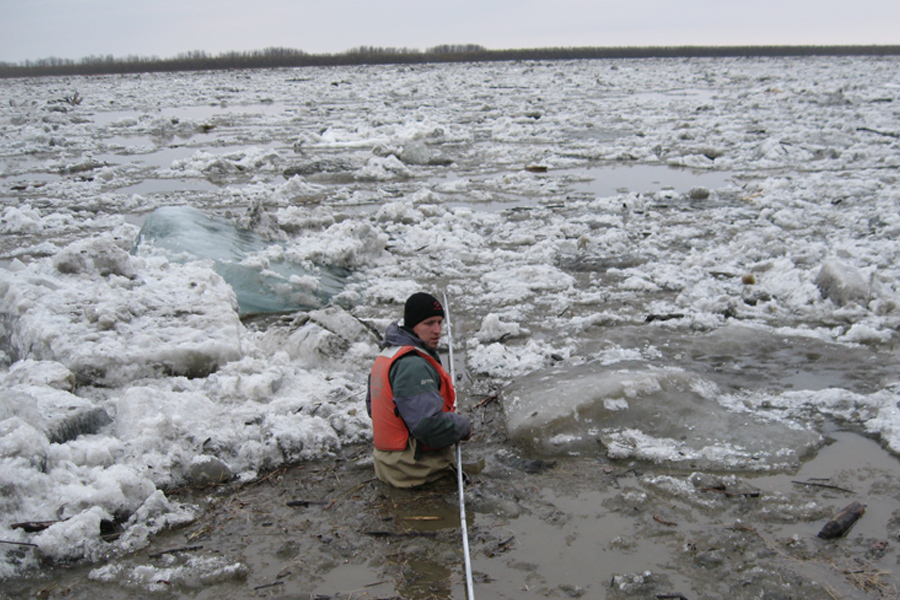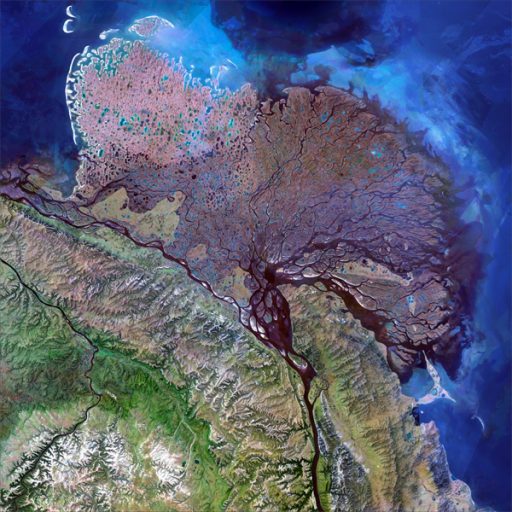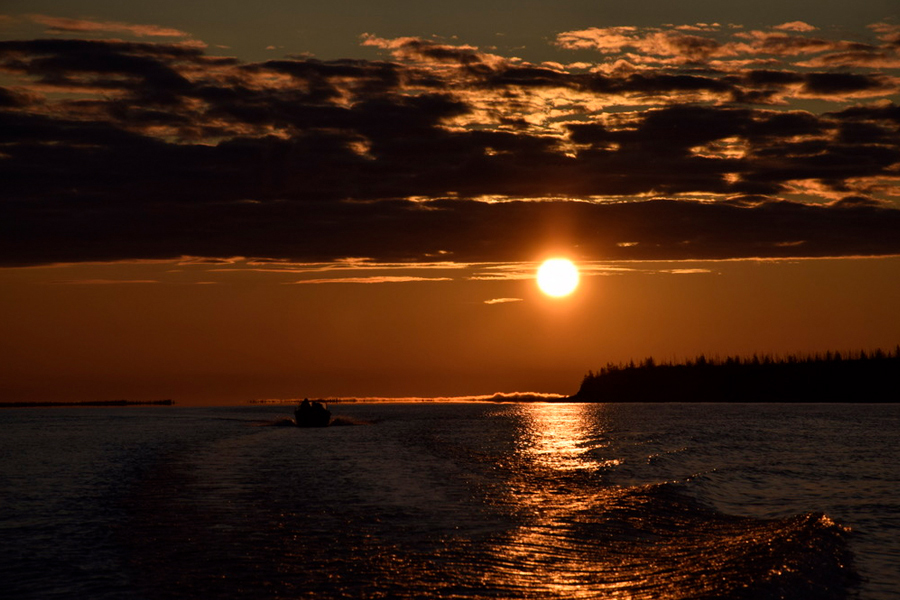
The cycling of carbon through the environment is an essential part of life on the planet.
Understanding the various sources and reservoirs of carbon is a major focus of Earth science research. Plants and animals use the element for cellular growth. It can be stored in rocks and minerals or in the ocean. Carbon in the form of carbon dioxide can move into the atmosphere, where it contributes to a warming planet.
A new study led by Florida State University researchers found that plants and small organisms in Arctic rivers could be responsible for more than half the particulate organic matter flowing to the Arctic Ocean. That’s a significantly greater proportion than previously estimated, and it has implications for how much carbon gets sequestered in the ocean and how much moves into the atmosphere.
Scientists have long measured the organic matter in rivers to understand how carbon was cycling through watersheds. But this research, published in Proceedings of the National Academy of Sciences, shows that organisms in the Arctic’s major rivers are a crucial contributor to carbon export, accounting for about 40 to 60 percent of the particulate organic matter — tiny bits of decaying organisms — flowing into the ocean.
“When people thought about these major Arctic rivers and many other rivers globally, they tended to think of them as sewers of the land, exporting the waste materials from primary production and decomposition on land” said Rob Spencer, a professor in the Department of Earth, Ocean and Atmospheric Science. “This study highlights that there’s a lot of life in these rivers themselves and that a lot of the organic material that is exported is coming from production in the rivers.”
Scientists study carbon exported via waterways to better understand how the element cycles through the environment. As organic material on land decomposes, it can move into rivers, which in turn drain into the ocean. Some of that carbon supports marine life, and some sinks to the bottom of the ocean, where it is buried in sediments.

The researchers looked at the six major rivers flowing in the Arctic Ocean: The Yukon and Mackenzie in North America, and the Ob’, Yenisey, Lena and Kolyma in Russia. Using data collected over almost a decade, they built models that used the stable and radioactive isotope signatures of carbon and the carbon-to-nitrogen ratios of the particulate organic matter to determine the contribution of possible sources to each river’s chemistry.
Not all particulate organic matter is created equal Carbon from soils that gets washed downstream is more likely to be buried in the ocean than the carbon produced within a river. That carbon is more likely to stay floating in the ocean, be eaten by organisms there and eventually breathed out as carbon dioxide.
“It’s like the difference between a french fry and a stem of broccoli,” said lead author Megan Behnke, a former FSU doctoral student who is now a researcher at the University of Alaska, Southeast. “That broccoli is going to stay in storage in your freezer, but the french fry is much more likely to get eaten.”
That means a small increase in a river’s biomass could be equivalent to a larger increase in organic material coming from the land. If the carbon in that organic matter moves to the atmosphere, it would affect the rate of carbon cycling and associated climate change in the Arctic.
“I always get excited as a scientist or a researcher when we find new things, and this study found something new in the way that these big Arctic rivers work and how they export carbon to the ocean,” Spencer said. “We have to understand the modern carbon cycle if we’re really going to begin to understand and predict how it’s going to change. This is really relevant for the Arctic at the rate that it’s warming and due to the vast carbon stores that it holds.”
The study was an international endeavor involving researchers from ten different institutions.
“That pan-Arctic view of science is more important than ever,” Behnke said. “The changes that are occurring are far bigger than one institution in one country, and we need these longstanding collaborations. That’s critically important to continue.”
Paper co-authors included Suzanne E. Tank, University of Alberta; James W. McClelland, University of Texas; Robert M. Holmes and Anya Suslova, Woodwell Climate Research Center; Negar Haghipour and Timothy I. Eglinton, ETH Zurich; Peter A. Raymond, Yale University; Alexander V. Zhulidov and Tatiana Gurtovaya, South Russia Centre for Preparation and Implementation of International Projects; Nikita Zimov and Sergey Zimov, Russian Academy of Sciences; Edda A. Mutter, Yukon River Inter-Tribal Watershed Council; and Edwin Amos, Western Arctic Research Centre.
This research was supported by the National Science Foundation through grants for the Arctic Great Rivers Observatory.





